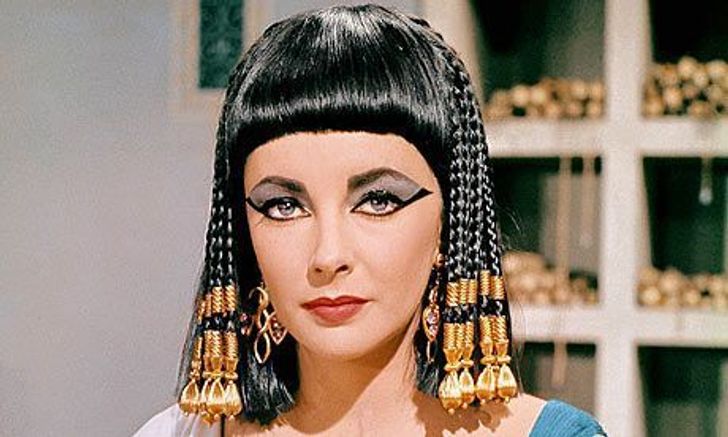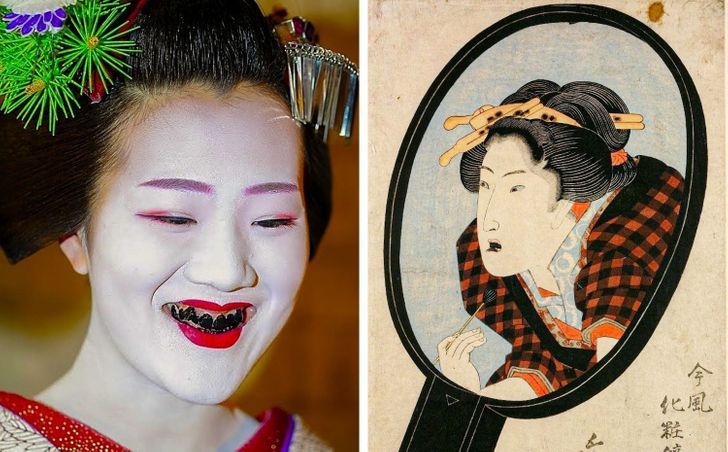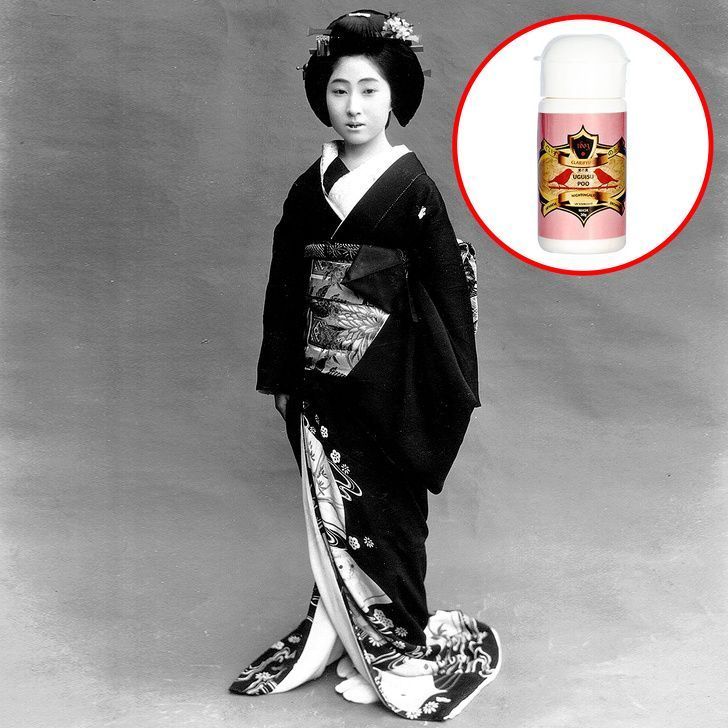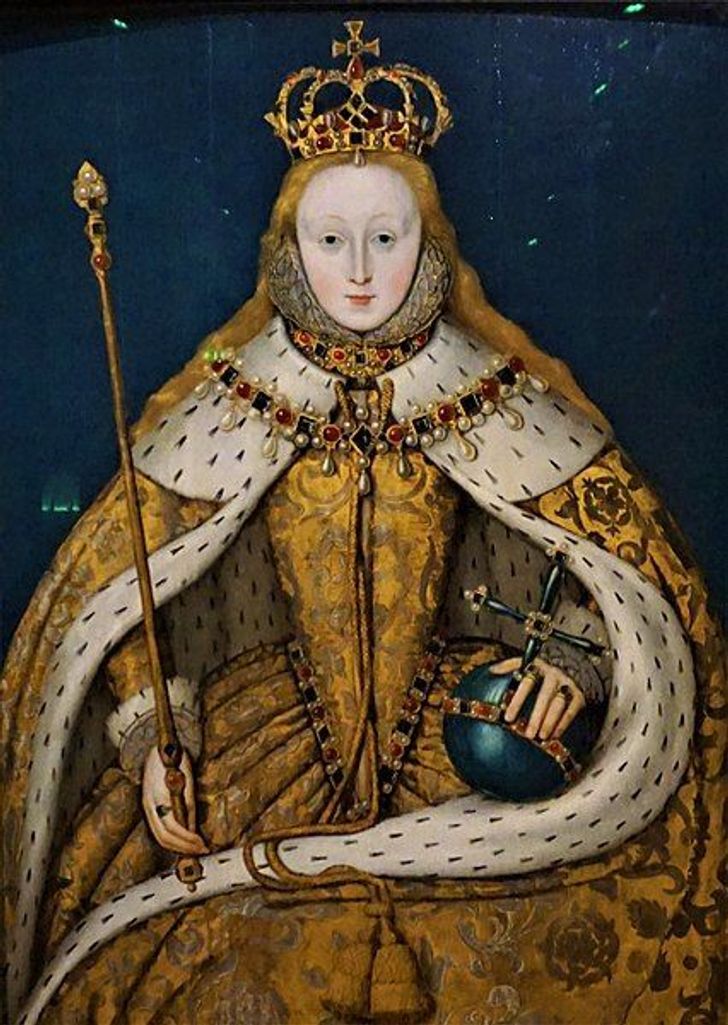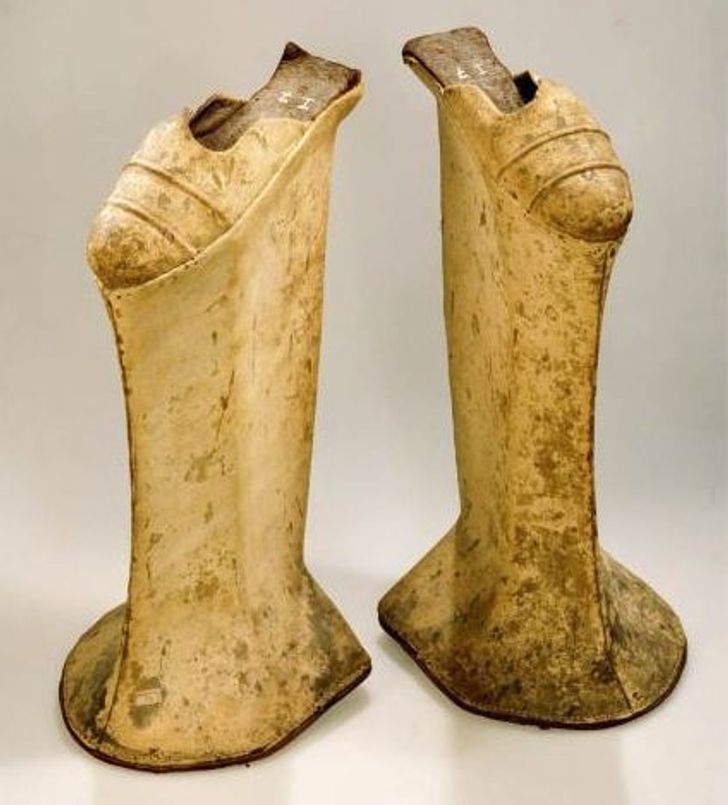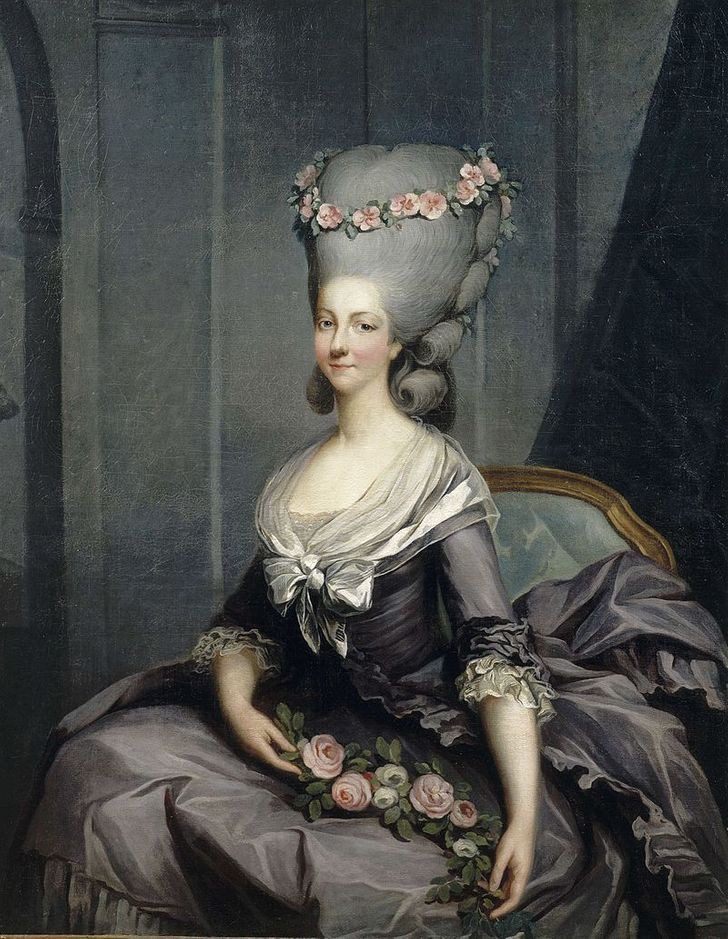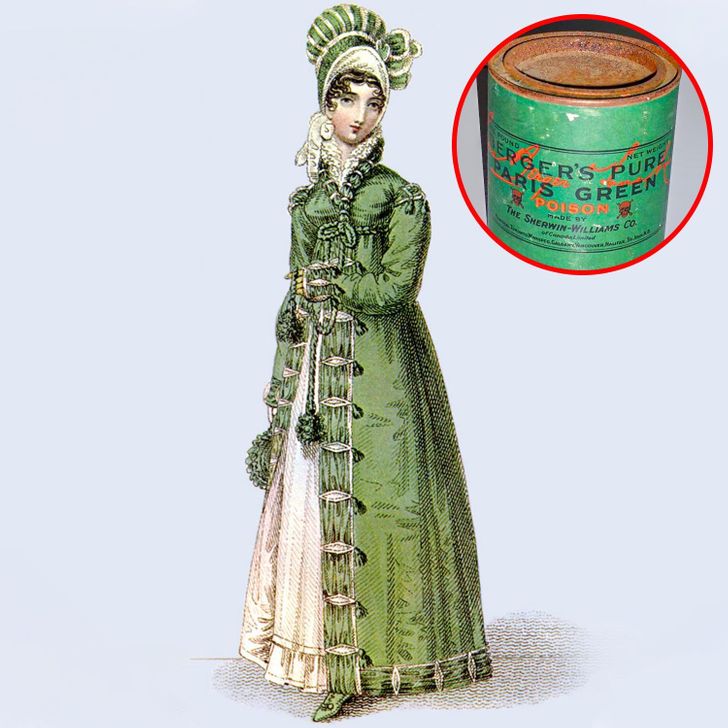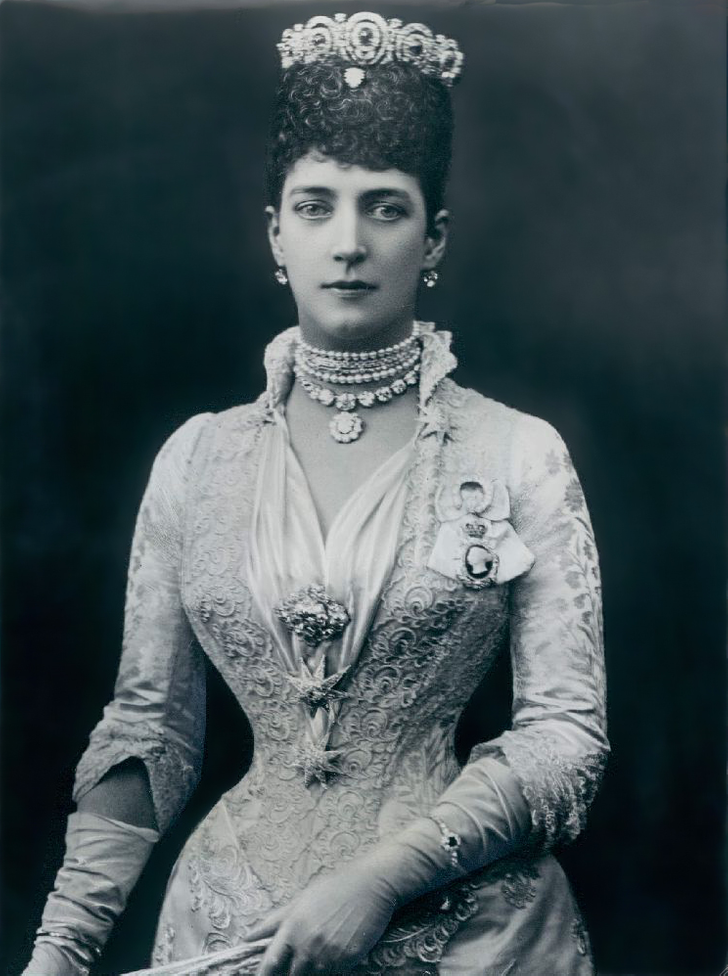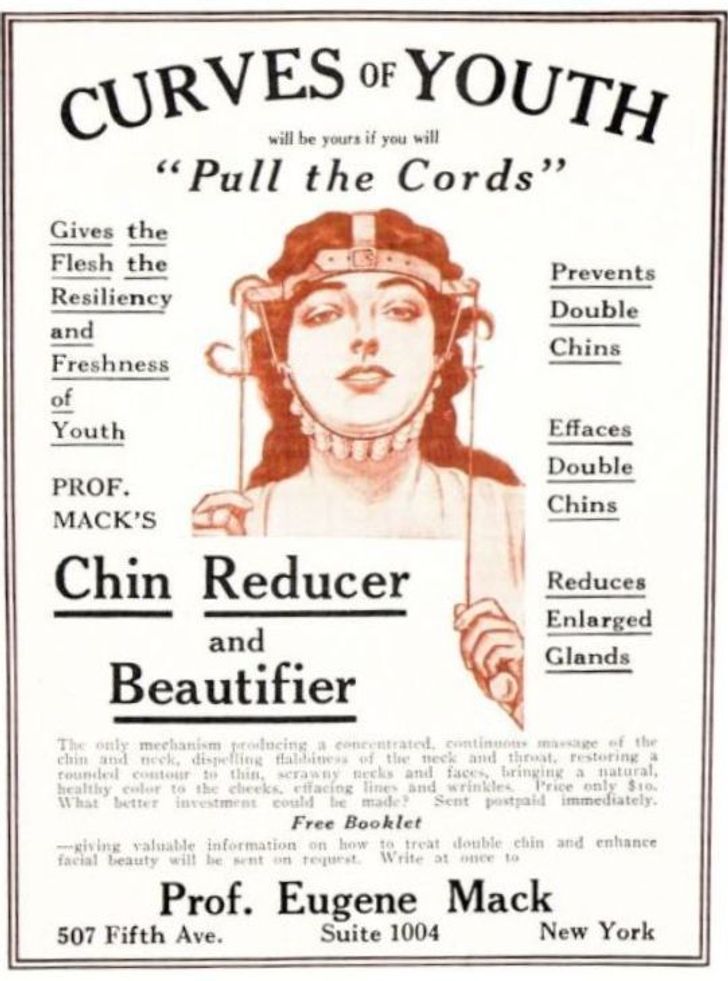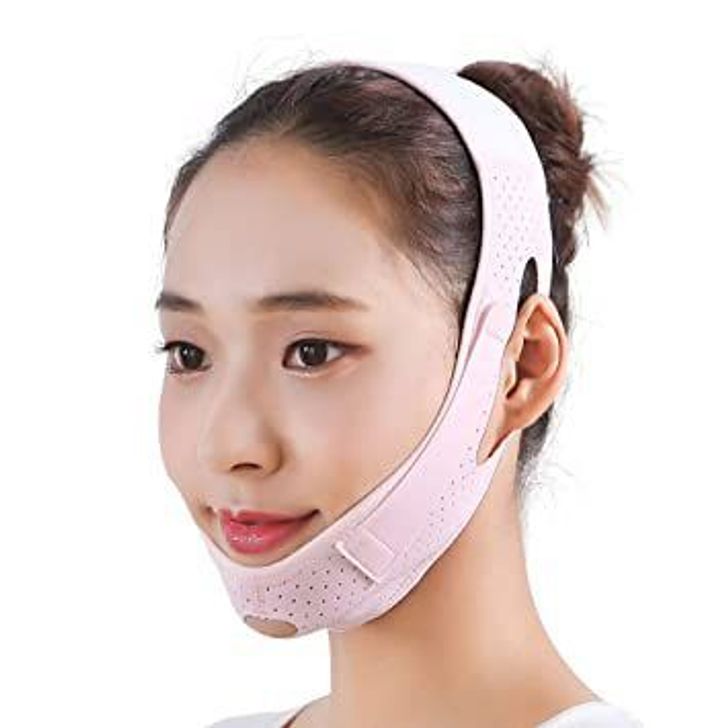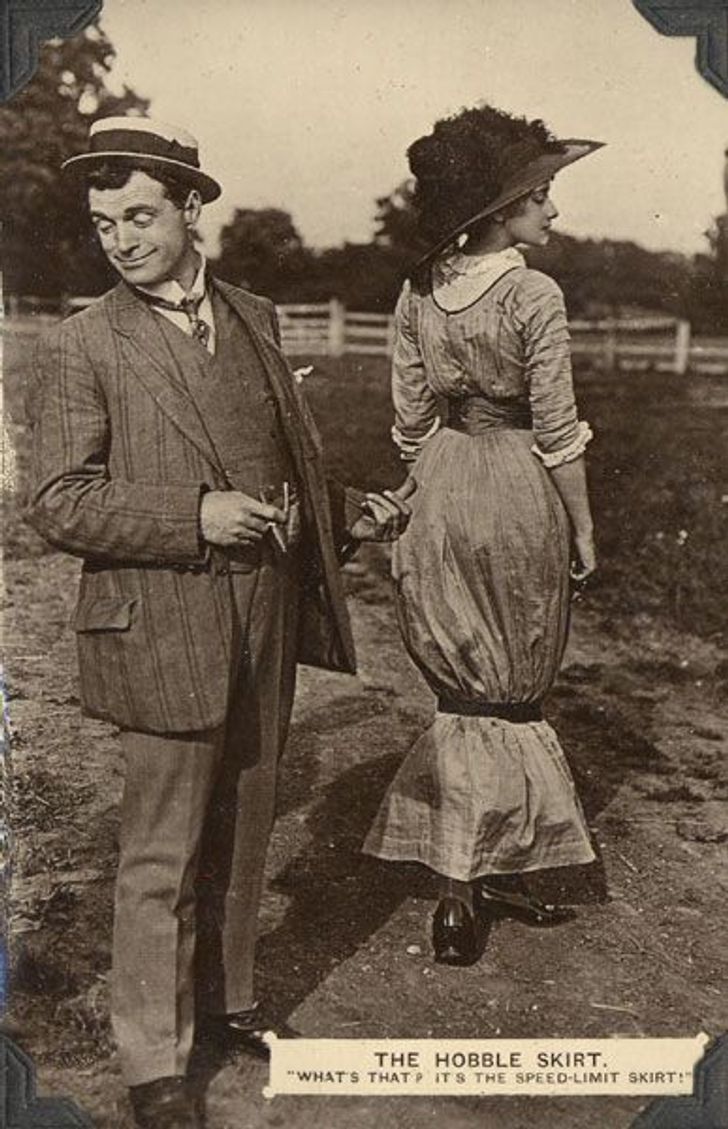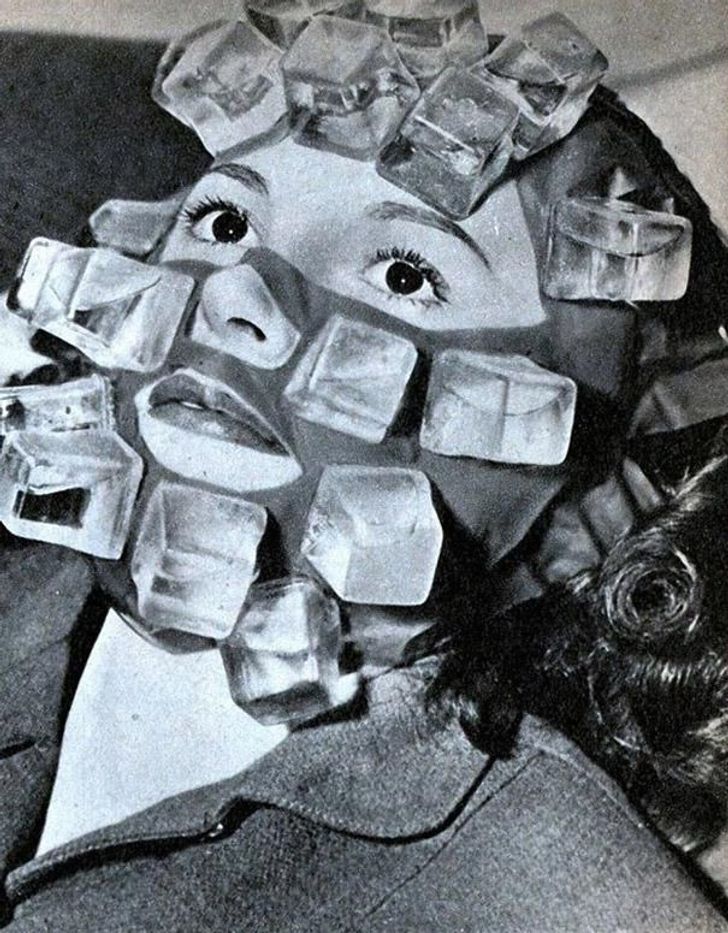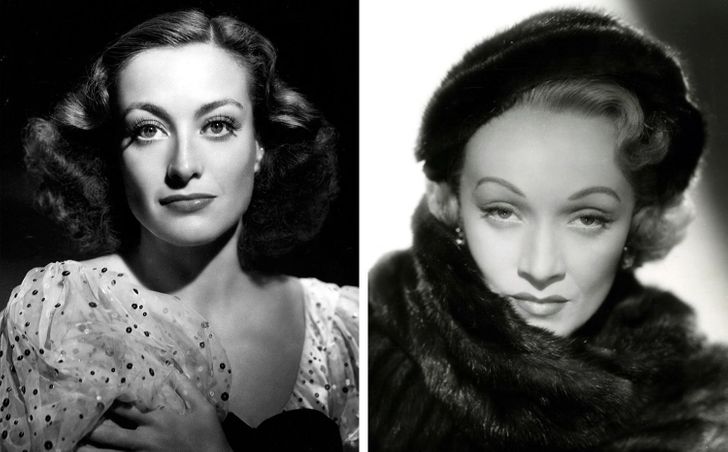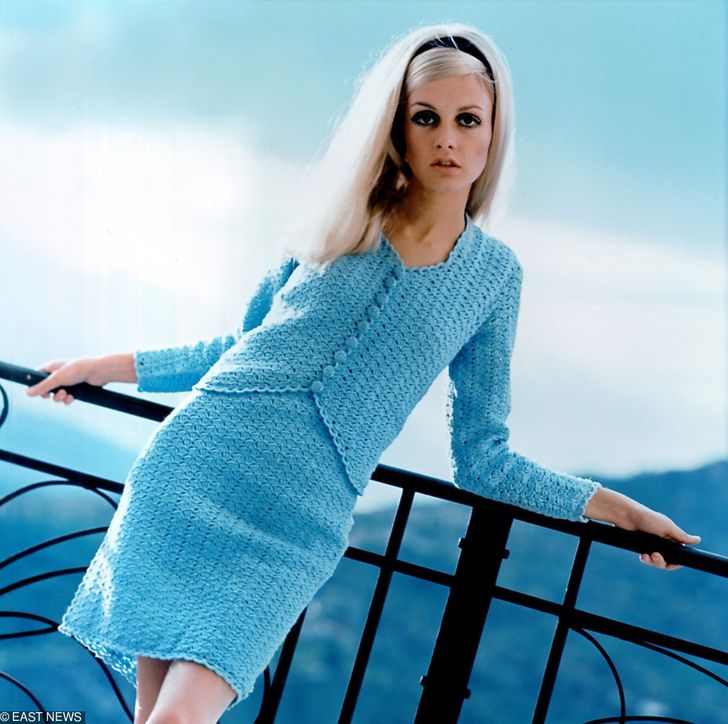Very strange indeed
14 Crazy Things Women Used to Do to Be Considered Beautiful (Some Are Still Done Today)
Did you ever imagine that nightingale droppings could help you keep your skin moisturized and flawless? Or that you could wear lipstick made from crushed ants and beetles? Or, better yet, that shaving the hair off the upper part of your forehead would make you look more noble or intelligent?
These and other practices were very common among women over the centuries. And some of them are still in use today, even if we don’t realize it.
At Bright Side, we picked out the strangest, craziest things that women have been subjected to just to meet beauty standards. One unfortunate tradition dates back to Ancient Egypt and is still going strong to this very day. We’ll let you draw your own conclusions on the matter!
1. Red cosmetics made from beetles were very common in ancient times (and insects may still be used in some lipsticks today).
To guarantee a beautiful and attractive pair of red-colored lips, Ancient Egyptian women would crush insects. From that they would obtain a sort of dye that they’d apply to their lips. This was Cleopatra’s own method (pictured above, played by Elizabeth Taylor in the now-classic hit Cleopatra). They also used a mixture of focus-algin, iodine, and bromine mannite to make lip color. However, little did some of them know that this combination could be fatal to the one who wore it as lipstick or to whoever kissed anyone wearing it.
But if you think using bugs to make pigments is a thing of the past, you’d be wrong. Nowadays, a little bug that lives in different cacti in Mexico, in the southern part of the United States, and in Peru (the first producer and exporter of cochineal in the world), the Dactylopius coccus, is used in the cosmetics, food, and beverage industries. This is actually what gives an intense red color to all these products. Therefore, it’s almost certain that you have either worn, drank, or eaten the dye extracted from this insect at some point in your life and maybe you didn’t even realize it!
2. In Japan, having black teeth meant that you were beautiful, respected, mature, and loyal.
Traces of blackened teeth can be seen on bones buried in Japan during the Kofun period (250 to 538 A.D.), between the 3rd and 6th centuries. Throughout history, this practice called ohaguro, in Japan, had a number of different meanings depending on the time and place that it was used. For example, in some cases, it was meant to show that a woman had come of age, in some others, to indicate that she was married or to symbolize fidelity. It was also believed to be a way of preventing tooth decay. While a few historians claim that the painting was a way to make married ladies look unattractive, there are many scholars that disagree with this theory.
The ink or dye, called kanemizu, was prepared with iron filings diluted in vinegar, to which powdered gall or tea was added. In the late 19th century, the Japanese government banned the practice of ohaguro, and today it is only used in plays, movies, and some traditional events. However, this tradition remains popular and is still practiced in some parts of Asia, including India, and also in Oceania.
3. Japanese women discovered that nightingale feces could improve their skin (and this product is still used today!).
Since the 17th century, Japanese women have used a mixture of rice bran and the feces of a species of nightingale (called uguisu in Japan) to lighten their skin. The habit was borrowed from Koreans, who were known to use bird droppings to remove difficult stains from their kimonos. Geishas and kabuki theater actors started using this exotic ingredient, called uguisu no fun, to clean their skin after they removed their dense white make-up.
You might find this story a bit silly, maybe even disgusting. But in any case, you should know that there’s actually some scientific reasoning to back up this practice. Bird droppings contain urea, a powerful moisturizer, also present in human urine and sweat, which is widely used in the modern beauty products industry.
But there’s more. The practice of using uguisu no fun as a moisturizer persists in the modern cosmetic industry. However, nowadays, the feces are sterilized and 100% free of microorganisms. What a relief! You’ll be happy to know that, according to gossip magazines at least, Tom Cruise and Victoria Beckham are some of the celebrities whose secret to looking amazing is nightingale droppings.
4. Bad teeth were a sign of status during the reign of Elizabeth I in the 16th century (as were white lead makeup and shaved eyebrows).
Queen Elizabeth I ruled England during the second half of the 16th century, and she was a major trendsetter. Of course, none of the trends she set are considered to be very attractive or healthy according to today’s standards. For starters, her teeth looked fairly worn and decayed because of her penchant for sweets.
Cane sugar was a novelty in Europe at the time. It was brought from North Africa and was a very expensive product. So, having dark teeth was a sign of status, and some women blackened their smiles just to give the impression that they belonged to the upper classes.
During this queen’s reign, having tanned skin indicated that you belonged to the working class. That’s why wearing the super white makeup we’ve all seen in the movies was used as a way to distinguish the wealthy from the nobles. However, Queen Elizabeth I wore white makeup for another reason: she had been infected with the smallpox virus, a disease that left deep scars on her face.
The makeup that was used at the time is banned today because it was made with a base of lead, which can cause neurological and other health problems. The typical look of the time was rounded off by shaving part of the hair so as to have a big forehead, a sign of power and intelligence. This trend was also copied by most of the Queen’s subjects, men and women alike.
5. European Renaissance noblewomen differed from others in that they wore incredibly high heels.
In 15th and 16th century Italy, women belonging to the higher social classes strove to distinguish themselves from the rest by wearing very high shoes, called chopines. There’s another explanation for the adoption of such a strange fashion trend: the platforms prevented the nobles’ dresses from dragging on the dirty streets and floors of the city as they strolled along.
The chopines’ trend emerged in Venice and quickly spread to other European countries, such as France and Spain. In order to be able to walk with at least some degree of balance and stability, ladies who wore chopines were always accompanied by 2 servants to support them at shoulder-level, literally.
6. Enormous wigs, fixed with lard, were a very elegant accessory in the 18th century (and mice loved them too!).
In the French court of the 18th century there was a time when, in order to look elegant, girls had to wear monumental wigs. They would have them decorated with all kinds of flowers, jewels, ribbons, and even stuffed birds. The image of the Princesse de Lamballe (above), friend and confidant of Queen consort Marie Antoinette, shows us a good example of what that trend looked like.
These wigs were the masterpieces of skilled professionals who attached the fake hair to the real hair using animal lard. Since women used to spend a lot of time with their wigs on, it was common for them to attract rats and other animals, especially while they were sleeping. Hence the origin of the expression “Your hair looks like a rat’s nest.”
7. In the 19th century, clothing and other objects were dyed with a pigment whose formula contained poison.
In 19th century Europe, the term “fashion victim” had a literal meaning. A certain shade of green, called Paris green or Scheele green, became very popular to dye fabrics, ribbons, artificial flowers, hats, wallpaper, and other common objects that people used every day. However, this dye was made with arsenic, a highly toxic substance. Before the end of the century, several countries banned its use in fashion and other manufacturing. In fact, today it’s used as a pest control product.
8. The expression “porcelain skin” had a literal meaning among wealthy women (they also imitated the Queen of England’s limp!).
You may have heard your grandmother or some other older woman in the family comment that “so-and-so has porcelain skin.” Well, there was a time, in the late 19th and early 20th centuries, when the expression had a literal meaning.
It is believed that Princess Alexandra of Denmark (later known as Queen Consort of England) was an expert in the technique of enameling, which basically involved applying a white paste made of zinc or lead (a toxic material) to the skin. They would then paint on the hardened paste to make it look as if they had pinkish faces, small veins, and other added details that made their makeup more realistic according to them. The result guaranteed a face without wrinkles and gave the impression of having “porcelain skin,” something for which Alexandra became famous.
The effect could last for a long time, depending on the techniques used. Otherwise, it could also be refreshed from time to time. The same type of technique was used to apply makeup on the neck and arms. In specialized salons in New York, you could get enameling that lasted from 2 days to 6 months.
Another curious fact about Queen Alexandra: she suffered from rheumatic fever in 1867, a condition that caused her to limp for the rest of her life. During that period, English women began to imitate her lopsided steps. Some women even had shoes made with different heights to make their gait look more realistic.
9. The chin reducer promised to restore lost youth in a few hours (today, this marketing technique still works).
This 19th-century chin reducer, advertised by a New York merchant, looked more like an instrument of self-torture than anything else. And even if that was the case, it became extremely popular. It claimed to get rid of the double chin and give women back “the freshness of youth.” This would be a fun anecdote to tell at a party if this device was actually just a crazy invention of the past. Unfortunately, this just isn’t the case. There are modern versions of the chin reducer and they can be purchased from various online shopping sites (see the picture below).
Could this possibly work? Pascale Day, a contributor to the English beauty website So Feminine, tested the product and answered that, indeed, the double chin is reduced when using this device... But the effect only lasts a couple of days. “It isn’t made to last, it’s something you do to get ready before a night out,” she wrote.
10. The latest fashion craze in the early 20th century: skirts that “bound” the legs and made it almost impossible to walk.
Tying and tightening: 2 fundamental conditions for the women of yesteryear to feel beautiful and elegant when wearing a skirt. That might be why the hobble skirt was a fashion trend that prevailed between 1908 and 1914. These skirts looked like a sort of tube at the bottom and forced women to have to take very short steps in order to be able to walk. That might actually be where their name comes from.
French designer Paul Poiret claimed to have created this strange fashion trend. He even claimed to have been the one who made it popular in the United States. In New York and Los Angeles, for example, streetcars were adapted so that women could hop on wearing those “baby step skirts.” In the postcard below, a man can be seen laughing at this garment and making a joke: “It’s a skirt with a speed limit.”
11. Ice mask to refresh your face, a hit in the ’30s in Hollywood
In the Hollywood of the 1930s and 1940s, parties were held daily at the mansions of big-name actors, directors, and producers. But no matter what happened, the day after, actresses had to look neat and beautiful. Their skin had to be radiant when shooting or taking part in press conferences.
So, according to the advertising of the time, this mask with plastic cubes filled with water could solve the problem of a swollen face. Just leave the mask in the freezer for a while, then put it on for as long as you need to reduce puffiness. Max Factor, the company behind this “innovation,” claimed their masks could also come in handy when actresses needed to relieve their faces after a long scene. According to them, it would smooth their features and even protect them from the effects of the strong spotlights used in movie studios.
12. During World War II, women painted their legs to create the illusion of wearing nylon stockings.
Nylon stockings revolutionized fashion in 1940, when 4 million units arrived on the U.S. market and, incidentally, sold out in just a few days. However, in 1941, when the United States entered World War II, the entire production of this new synthetic fiber was destined for the manufacture of parachutes, ropes, nets, and other military artifacts.
Millions of women across the country were left without their precious accessory. But then the cosmetics industry tried to temporarily solve the problem by creating something called “liquid stockings.” This new product made it possible to apply makeup to the legs to give the impression that they were wearing nylon stockings. The more fanciful ladies used eyeliner to mimic the stitching of these stockings on the calves.
13. Movie stars used to have their molars removed to get a more angular and photogenic face.
This subject is controversial and has caused numerous debates among fans of classic American cinema. Hollywood stars of the 1940s, like Joan Crawford and Marlene Dietrich (see pictures above), reportedly had their back molars removed to give them a more “sunken” face and, therefore, more angular features.
Marlene always denied this rumor, even in her autobiography. But she had another beauty trick: stretching her facial skin with surgical tape hidden under her hair or wigs before going on stage.
As for Joan Crawford, this procedure was also nothing but a rumor. But later on, a specialist of her life and career, Bryan Johnson, presented documents as proof that the star’s molars were extracted in 1974 during a periodontal treatment, not in her youth. However, none of these are conclusive by any means.
14. The standard of thinness caused many women to “flatten” their breasts to look slimmer.
Hiding your breasts in any way you could was all the rage in the 1920s, when the standard of beauty dictated that women should have a super slim body. Flapper girls, as they were called back in the day, kept a thin silhouette thanks to special lingerie that compressed their breasts.
After an era in which voluptuous and curvy women like Marilyn Monroe, Elizabeth Taylor, and Sophia Loren set the standard of beauty, the “straight” look became a new trend (again). This happened more or less during the second half of the 1960s. It was probably the popularity (and slenderness) of English model Twiggy (pictured above) that led many girls to resort to bandages to try to imitate her slim figure and pull off the fashionable clothes from that time.
And you, have you ever done something crazy to look beautiful? Have you undergone an unusual treatment that worked for you? Or, on the contrary, did a procedure go wrong? Tell us your story in the comment section!
Comments
Ok, these are absurd... they don't even need these, everybody is beautiful in their own way❤️
i have a chin reducer! 😁
ohaguro i.e. blackening of Teeth has never been practiced in any part of India. Please get your facts checked before posting it on Internet
Related Reads
People Online Noticed Brad Pitt’s New Partner Is a Spitting Image of Angelina Jolie

I Took the Money My Boyfriend Saved Up for an Apartment and Changed Our Relationship Forever

I Refuse to Give Up My Rights Just Because I Wasn’t a "Devoted Daughter"

20 Times Kids Were Too Smart for Their Age and Made Us Laugh Until We Cried

15 People Who Put an Unforgettable Story Into Their Supermarket Trolley

15+ Stories That Prove Moms’ Love Tank Never Runs Empty

My Fiancé Wants a Joint Account, but I Don’t Want to Lose Control Over My Money

My DIL Broke My House Rules—I Made Her Face the Consequences

A Man Tried to Intimidate a Woman on the Plane, but She Turned Out to Be a Hard Target

12 Stories of Strangers Whose Actions Left a Lasting Mark

13 Disturbing Realities That Show the Twisted Side of Life

A Woman Tried to Steal My Seat on the Plane Using an Unsettling Tactic

